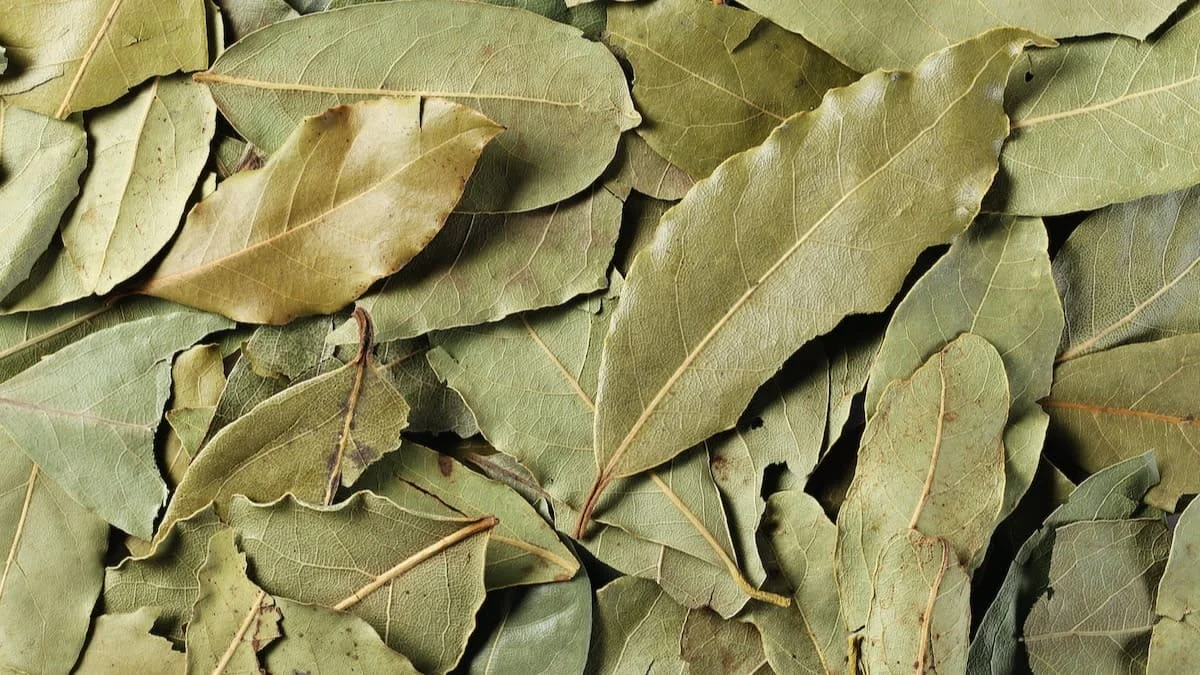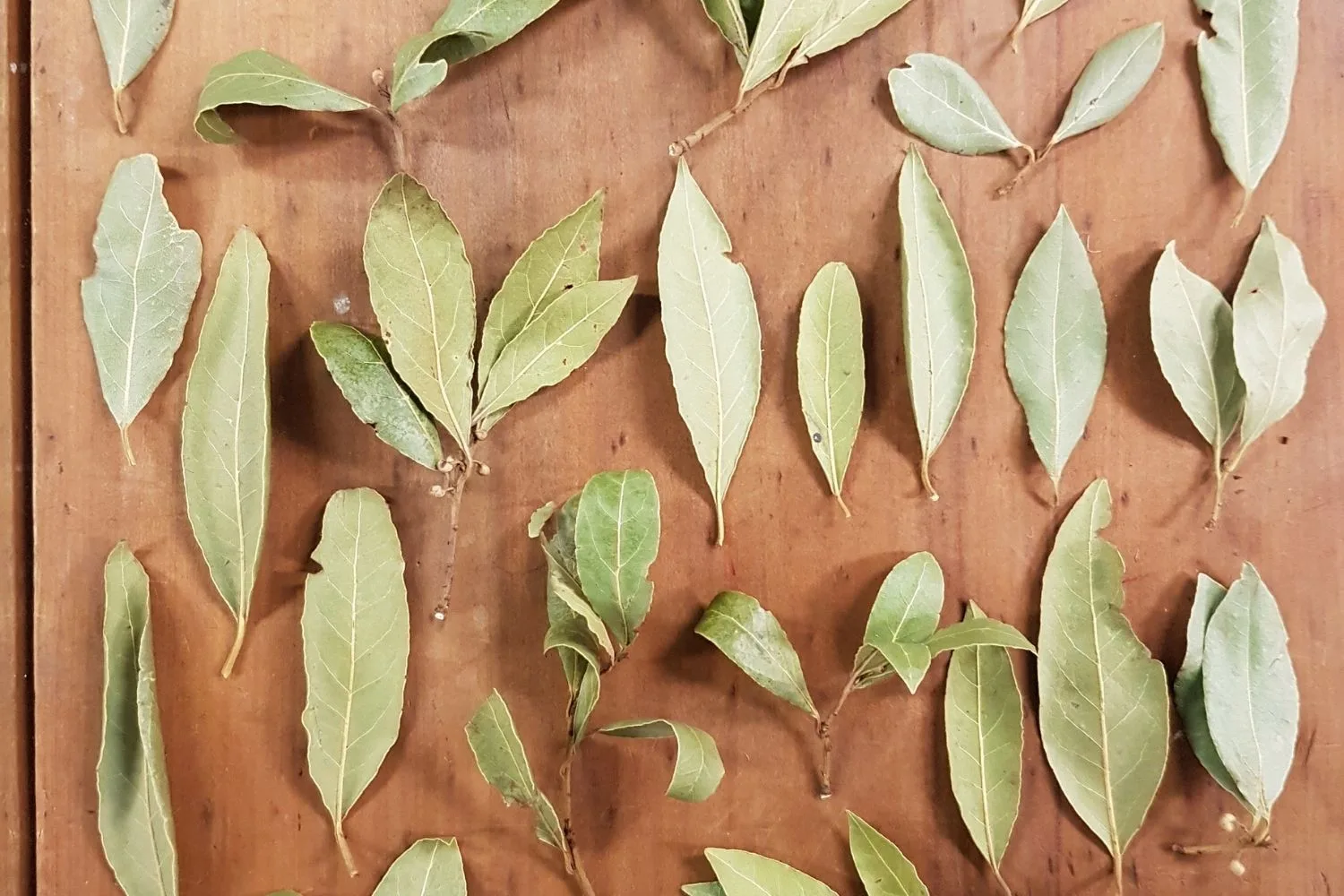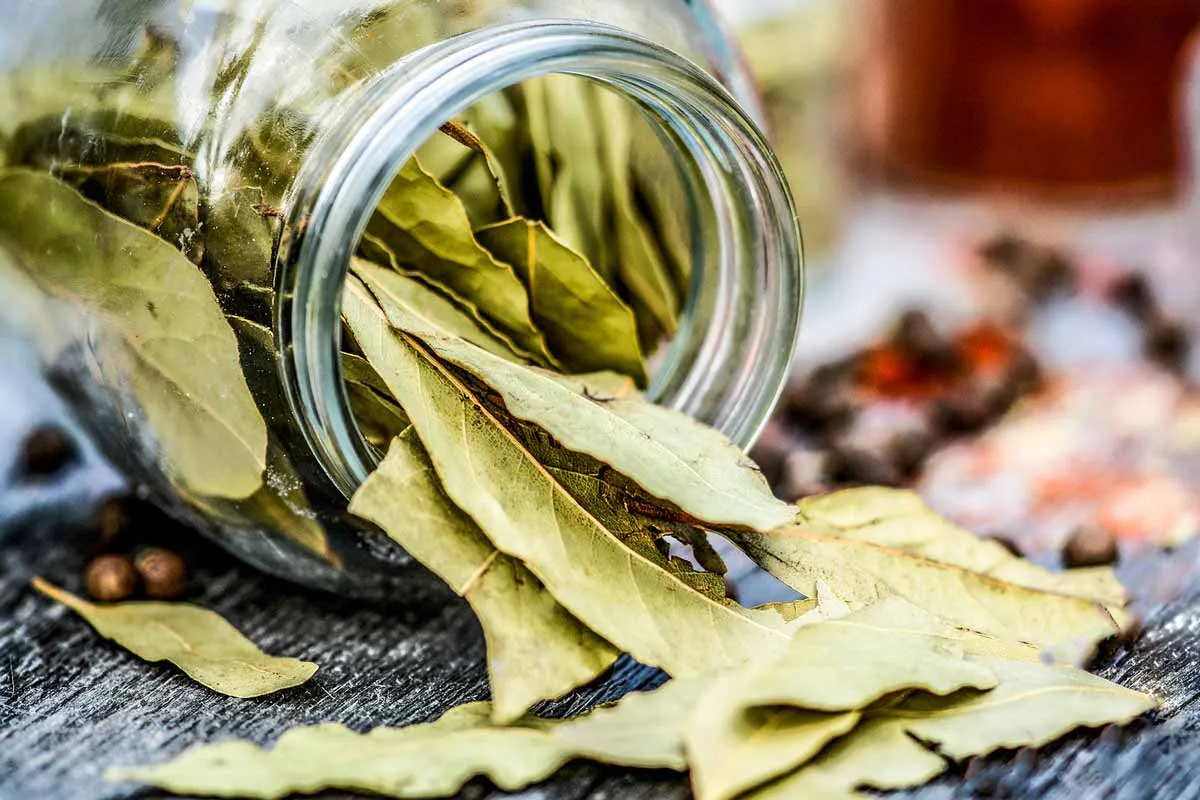Bay leaves are a popular herb that adds flavor and scent to soups, stews, marinades, and other dishes. While dried bay leaves can be purchased, drying fresh ones yourself can provide you with leaves with the best flavor. You can enjoy those bay leaves for months to come if you dry them properly!

Preparing Bay Leaves for Drying
Once a bay tree reaches the age of three to four, the leaves can be harvested. Leaves that have changed color from green to a pale olive green indicate that the plant is ready for harvest. The leaves should be washed gently and then dried completely using paper towels or a clean dish towel. Before moving on to the drying process, be sure there is no trace of moisture left on the surface.
Wrap the leaf bundles in cotton string or rubber bands to keep them together. This helps to maintain order while drying them on a line. If you want to avoid shocking or damaging the tree, don’t take more than a third of the leaves off at once. You can get high-quality fresh bay leaves ready for drying if you pick and prepare them properly.
How to Dry Bay Leaves In An Oven
Set your oven to its lowest setting, ideally 200 degrees Fahrenheit, and put the bay leaves on a baking sheet in a single layer. Flip the bay leaves every twenty minutes to maintain even drying, and the bay leaves should be dry in an hour or two.
How to Dry Bay Leaves In A Microwave
Another quick method for drying bay leaves is to use a microwave oven. Place the bay leaves on the plate in a single layer. Microwave for thirty seconds on high, checking after each session. Microwave in 30-second increments until the leaves are crisp.
Depending on the power of your microwave, this should take between 1-3 minutes. The plate absorbs moisture and keeps the leaves from burning. To achieve consistent drying, rotate the plate on a regular basis. Allow it to cool completely before storing.

How to Dry Bay Leaves In A Dehydrator
Place bay leaves on mesh drying trays, stem side up, so the air circulation dries the thickest part of the leaf first. Set the temperature to 95–100°F and dehydrate the leaves for 5–7 hours, or until totally dry.
Food dehydrators steadily eliminate moisture at a constant low temperature. The volatile oils that give bay leaves their distinct perfume and flavor are preserved in this manner. During the drying process, they require little inspection or rotation. Just make sure you don’t overfill the trays.
How to Dry Bay Leaves Naturally
Arrange the bay leaves in a single layer on a baking sheet and cover with a paper towel. Place the tray in a cool, dry location away from direct sunlight, with plenty of ventilation. Attics, sheds, and closets are all viable options.
The knotted bunches can alternatively be placed on baking racks or mesh screens. Turn the leaves every now and then to promote equal drying on all sides. Allow 1-2 weeks for the leaves to dry completely, or until they are brittle when crushed. Check for mold growth on a regular basis and eliminate any affected leaves.
After your bay leaves have been thoroughly dried, regardless of the method chosen, proper storage is also essential. Fill airtight glass jars or containers with dried leaves. To retain the fragrant chemicals in the leaves, store them in a cool, dark closet. Dried bay leaves can be stored properly for up to a year before losing flavor or scent.
Knowing When They’re Done Dry
So, how will you know when the bay leaves are completely dried? Here are a few warning signals to look out for:
- Crispy to the Touch. After drying, the leaves should be brittle and snap rather than bend. Give them a pinch test to see if they’re crunchy.
- No Moisture Remains. If the leaves still feel damp or leave moisture spots, they require extra time from the fan. You want the surface to be crackly dry.
- Potent Perfume. Once crinkled, a well-dried leaf will truly perfume the air with its recognizable herby aroma. If the aroma is faint, continue drying!
Mistakes to Mind When Dry Bay Leaves at Home
Rushing the process is an easy way to sabotage an entire batch. Some things to keep an eye out for:
- Too much heat can brown or burn leaves before they dry completely. Slowly and low.
- If missing moisture areas are not given enough time to evaporate, they can produce mold.
- Leaves placed too tightly will not dry properly. Maintain adequate airflow distance between each leaf.

How to Store Bay Leaves
Fully dried leaves can be stored in an airtight container, such as a jar or tin, in a dark cabinet for up to a year. Bundles can be added to soups and stews—anywhere an herbal flavor is desired!
FAQs
Air dry: Arrange the bay leaves in a single layer on a baking sheet and cover with a paper towel. Place the tray in a dark and dry place out of direct sunlight with plenty of ventilation. The bay leaves should dry in fourteen days. You can flip them after the first week to ensure they dry evenly.
Bay leaves can be used fresh or dried and are used in cooking to give a fragrant flavor to soups, stews, and other dishes.
Fresh bay leaves, shown on the left here, however, can impart a slightly bitter flavor, so this is an herb that is far better used dried. To dry them is easy: just hang a branch in an airy spot, and the leaves will dry in a couple of weeks.
First, ensure that the bay leaves are completely dry before storing them. Moisture can lead to mold and spoilage. Once dry, transfer the bay leaves to an airtight container. This will help preserve their freshness and prevent them from absorbing any odors from other pantry items.
You can dry herbs like bay leaves with a few easy methods. In the air, in an oven, in a dehydrator, and in the microwave.
Sources:
- How to dry bay leaves
- How to Dry Bay Leaves
- Bay tree (Laurus nobilis)
- How to Dry Bay Leaves: 4 Methods for Drying Bay Leaves
- How To Dry Bay Leaves
- How to Dry Bay Leaves
- How to Dry Bay Leaves: 3 Easy Methods for Drying
- How to Dry Bay Leaves at Home
- 4 Easy Methods of Drying Bay Leaves
- BAY LEAVES
- How to Dehydrate Bay Leaves
- How to Dehydrate Bay Leaves
- HOW TO DRY BAY LEAVES
- Drying Bay Leaves – The Complete Guide
- How to Dry Bay Leaves
- Dehydrating Bay Leaves
- Drying bay leaves
- How to Dry Bay Leaves
- How to Dry Bay Leaves in Your Oven
- How to Dry Bay Leaves Gift Idea!
For more cooking tips, hacks, and advice:
- Best Ways to Reheat a Chipotle Bowl
- Maximizing Leftover Chipotle Fridge Life
- Achieving Brisket Greatness in the Oven
- Juicing Frozen Fruit: Does It Work?
- Baking Toast to Perfection in the Oven
- Letting Brisket Rest for Best Results
- Achieving Warm, Gooey Cinnamon Roll Bliss on Reheat
- Achieving the Perfect Potato Cut
- Can You Boil Oven-Ready Lasagna Noodles?
- Turning Pancake Mix into Easy DIY Waffles
- Demystifying the Perfect Simmer Temperature